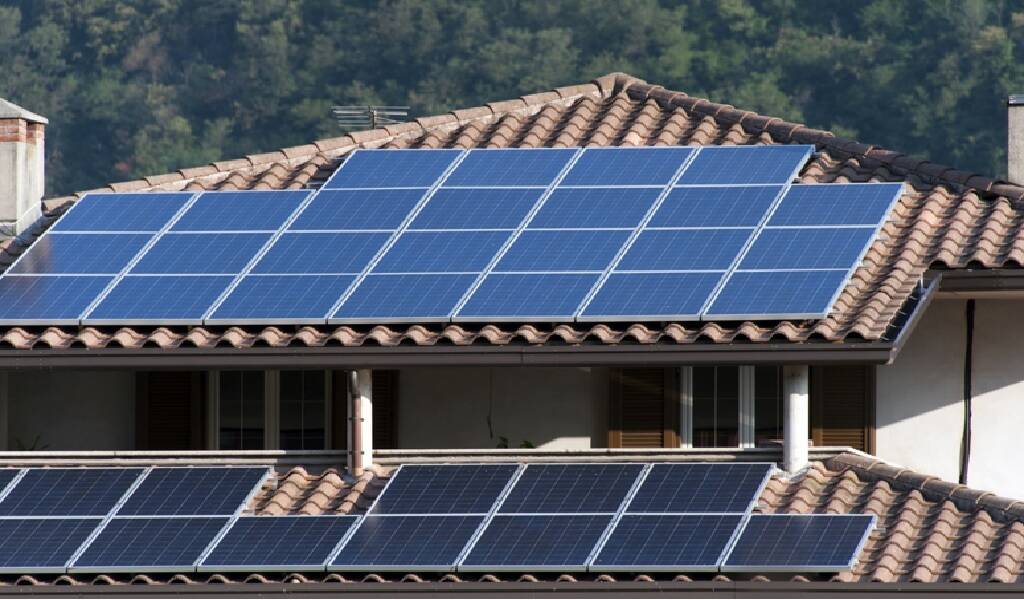Are you pro prepared to take advantage of the solar panel tax credit?
One of the biggest reasons to choose solar power for their homes is the federal solar panel tax credit. It’s one of the largest and longest tax credits available, and could save you a great deal of money.
If not, don’t worry. We’ve got everything you need to know. Let’s take a look at a quick guide to the federal solar panel tax credit.
What is the Federal Solar Panel Tax Credit?
The Federal Solar Panel Tax Credit is a tax incentive for homeowners and businesses that install solar panels on their property. This credit allows for a credit of up to 30% of the cost of buying and installing the solar panel system.
The credit is available to both residential and commercial properties and can be applied to solar panel systems installed both within the US and its territories. The credit is applied directly to the taxpayer’s federal income tax form and is based on the dollar amount spent on the system.
Homeowners should research the specific rules of their state or local area to learn if any additional incentives are available as well. The Federal Solar Panel Tax Credit is a great way to save on costs associated with purchasing and installing a solar panel system, making renewable energy a more financially attractive option for many.
Benefits of Taking Advantage of the Tax Credit
Taking advantage of the federal solar panel tax credit (ITC) could be a great way to reduce your federal income tax liability and increase your return. The ITC provides a 30% tax credit for purchasing and installing a solar system.
This credit can be used to reduce the cost of a system or the tax liability can be carried forward to future years, up to six years, giving you more energy savings down the road. By taking advantage of the ITC, you could save over a third of the cost of your solar system and significantly reduce your energy bill in the coming years.
Additionally, the ITC helps support the growth of renewable energy sources and gives people the opportunity to feel good about going green and doing their part to create a better future for the nation.
Calculating Your Solar Tax Credit Amount
Calculating your Solar Tax Credit amount is an important step to understanding the Federal Solar Panel Tax credits. There are several factors to consider when calculating how much you can save. Firstly, your location plays an important role in the amount you can save.
Different states and localities offer different incentive programs based on the availability of solar energy in the region. Additionally, the size and wattage of the solar panel system must also be taken into consideration. The larger and more powerful the solar panel system, the more you will be eligible for the tax credit.
Finally, the type of purchase you make – whether outright or through a lease or loan – will affect the amount of credit you can receive. When taking all these factors into consideration, you’ll shape your tax credit amount accordingly.
Qualifying for the Solar Panel Tax Credit
The Solar Panel Tax Credit has been around since 2005 and has been an increasingly popular incentive for homeowners who are looking to reduce their electricity bills. To be eligible, you must meet certain criteria, such as having an address in the United States and owning a solar energy system.
The system must also be installed in or on the home or business to be considered for the credit. You must also have a Social Security Number or Employer Identification Number, and you must be in the 25 percent federal income tax bracket or below.
Additionally, the system must be hooked up to the local electric grid. If you meet these criteria, then you are likely eligible for the credit and can start to reap the many benefits associated with solar energy.
Tips for Maximizing Savings with the Tax Credit
Installing solar panels can be a costly but important investment depending on the financial situation of an individual. Knowing where to look for tax credits regarding solar energy can be a difficult task; however, researching the Federal Solar Panel Tax Credit can save you money.
The Federal Solar Panel Tax Credit, also known as the investment tax credit, is for homeowners and businesses who have installed solar panels on their property. Here are some tips for maximizing the savings from this tax credit. Understand that the solar credit can cover up to 26% of the cost of your solar installation. Know when to file because the tax credit is designed to be taken annually.
This means you can take the full credit in the year you had the system installed, but any remaining amount is required to be carried forward to the next year.
Finally, keep all your receipts and other relevant documents, as this is necessary when it comes to filing for the solar panel tax credit. Following these tips can help ensure that you maximize the savings from the Federal Solar Panel Tax Credit.
Creating a Financial Strategy for Investment in Solar Panels
Creating a financial strategy for investing in solar panels is important, especially in light of the federal solar panel tax credit. This credit allows taxpayers to deduct 26% of their total solar panel installation and development costs from their federal taxes.
The credit can be applied to both residential and commercial projects and can be spread out over several years, providing further financial flexibility. To maximize the benefits of the federal solar panel tax credit, homeowners and businesses considering solar investments should work with a financial planner to create a detailed plan outlining their total expected costs and potential tax credits.
Additionally, research should be done to determine if any state or local tax credits may be applicable in order to maximize the return on investment. It is important to ensure that enough savings can be seen to justify the up-front costs of solar panels in the long term by combining the federal solar panel tax credit with any other applicable tax credits.
How to Claim the Tax Credit
The Federal Solar Panel Tax Credit is a great incentive for those thinking of obtaining solar panels for their home. The credit can be taken as a one-time discount on your federal income tax for up to 30% of costs associated with solar panel installation.
To claim the Federal Solar Panel Tax Credit, you must complete Form 5695 and include it with your federal tax credit. You must have evidence of your installation and the corresponding costs in order to claim the credit. The costs must be incurred prior to the end of the calendar year, and they must be specific to the solar energy property itself.
Finally, the property must be installed on a home that you own and use as your primary residence. With the help of this guide, you now have an understanding of how to claim the Federal Solar Panel Tax Credit.
Filing Requirements
Filing requirements for claiming the credit include providing a copy of a sales invoice, qualified solar panel equipment receipts, and other supporting documents, including delivery and installation contracts.
Additionally, the claimant’s solar energy system must meet certain eligibility requirements, such as being brand-new, energy efficient, and commercially available. With the proper paperwork, individuals and businesses can realize substantial savings on their solar panel investments.
Alternatives to the Federal Solar Tax Credit
The federal solar tax credit can offer a great incentive for many homeowners to make the switch to solar energy, but it isn’t the only option out there. Alternative tax credit options can be obtained through individual states, giving those who are not eligible for the federal credit an option to lower the cost of investing in solar energy.
Depending on where you live, some states offer a straight credit, while others may offer a rebate, annual payment or a Performance-based Incentive (PBI). Additionally, homeowners can explore the possibility of solar financing with either a loan or a leasing option that can provide the homeowner with long-term savings.
Investing in solar energy can be a great decision, and the various alternatives to the federal solar tax credit can ensure you’re able to make the most of the investment.
Eligibility for the Federal Solar Panel Tax Credit
The federal solar panel tax credit provides significant savings to homeowners who install solar energy systems on their property. Eligibility for the federal solar panel tax credit varies depending on the type of system being installed. For systems installed before January 1, 2020, homeowners can receive a tax credit of up to 30% of the cost of the solar energy system.
For systems installed after January 1, 2020, the tax credit is offered to homeowners at 26%. In addition, certain types of solar water heater systems, including solar pool heaters, are also eligible for the federal solar panel tax credit. To be eligible, the solar energy system must meet certain criteria, such as being certified as meeting efficiency standards and not being used as a personal residence.
Finally, taxpayers must also be current on their income tax filing to be eligible for the federal solar panel tax credit. All of these requirements must be met in order to qualify for the federal solar panel tax credit.
Understand What Tax Credit Covers
The federal solar panel tax credit is an incentive offered to those who choose to install solar panels in the United States. The tax credit is designed to cover up to 30% of the cost of installing a solar panel system. To be eligible for the credit, the panels must be installed after 2006, the photovoltaic system must be used on residential or commercial property, and the system must be operational by the end of the calendar year.
The tax credit is applicable to panels, aluminum racking, wiring, and more. The credit does not cover the cost of other items in the solar system, such as inverters, meters, batteries, and backup generators. The solar panels must be certified by USA standards, must be a photovoltaic system, and must be connected to an electrical grid.
Maximum Solar Tax Credit Amounts
The Federal Solar Panel Tax Credit is a great incentive for homeowners to install solar energy equipment on their property. The tax credit was established in 2020 and allows for homeowners to receive a tax credit for up to 26% of the cost of their solar energy installation.
The maximum solar tax credit amount is limited to $2,000, meaning that homeowners can only receive a maximum of $520 in tax credits. In order to be eligible for this tax credit, homeowners must have a solar system that was installed and activated by December 31st, 2021. The system must meet certain requirements, such as having a minimum power output of 1 kilowatt.
Those who choose to install a solar energy system after 2021 may be eligible for a reduced credit. All in all, the Federal Solar Panel Tax Credit is a great opportunity for homeowners to save money on their solar energy installation, and as long as they meet the prescribed requirements, they can still take advantage of the maximum solar tax credit amount of $2,000.
If you’re interested to learn more about solar panel installation and tax credits, follow this URL.
Learn More About Federal Solar Panel Tax Credit
The federal tax credit for solar panels helps incentivize individuals and businesses to reduce their carbon footprint. Solar panel systems are an excellent way to help reduce energy bills while contributing to a greener planet. Researching and exploring state-level incentives is a great way to maximize the benefits you get from switching to solar energy.
Did you find this article helpful? Check out the rest of our blog for more.

















